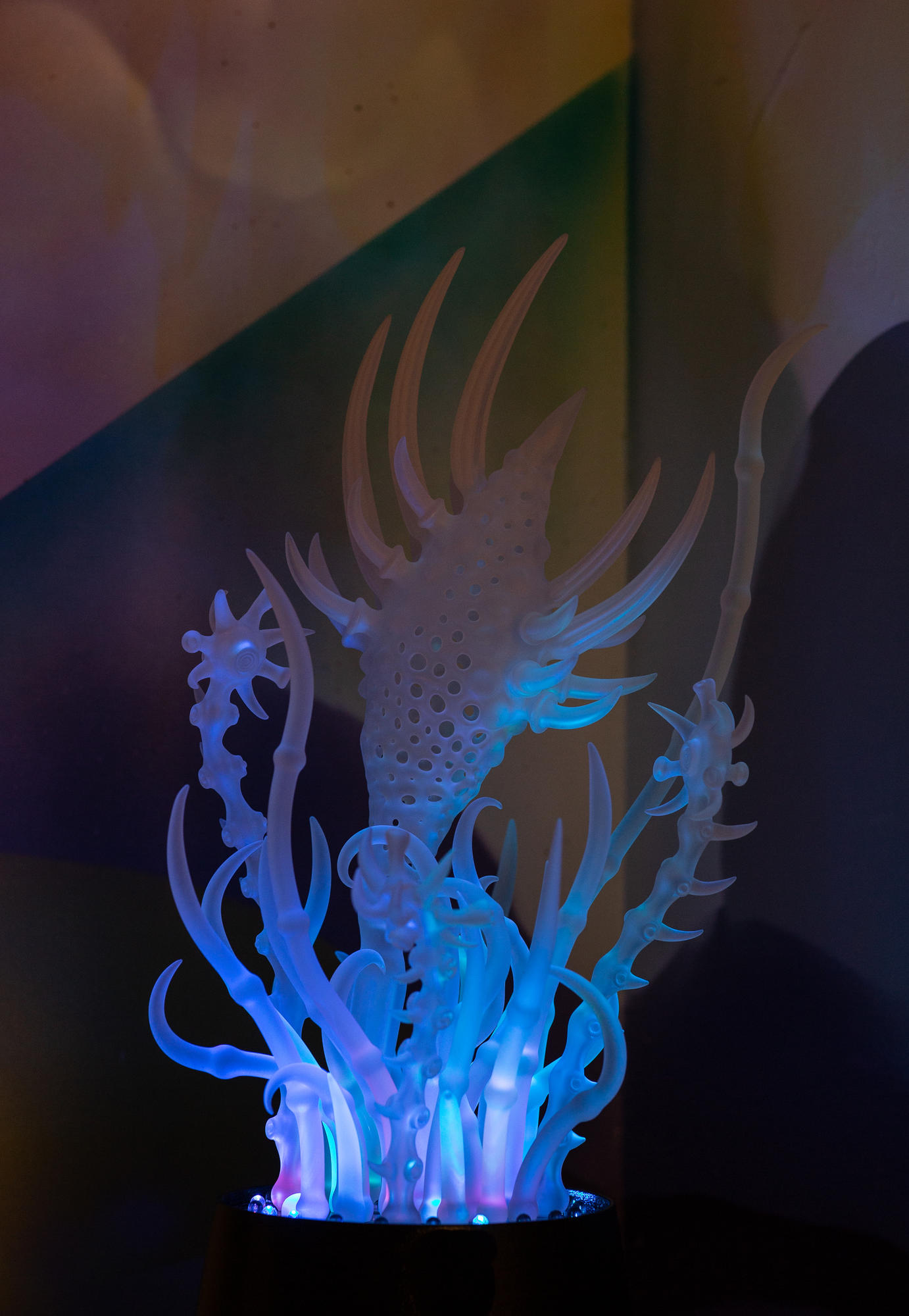
Bonsai, the art of growing miniature trees, has a magic power to transport us to another world, a quality shared by Patrick Bergsma’s “Landscape-Sculptures”. Inspired by these miniature landscapes that have existed in Japanese culture for over a thousand years, the Dutch artist sought to create his own versions of the tiny lands. Many Japanese cultural characteristics, in particular the influence of Zen Buddhism, inform the bonsai tradition in Japan. However, this harmony is disturbed by Bergsma who incorporates mini “marooned people” into post-apocalyptic scenes.

Bergsma’s bonsai are a culmination of his previous work up until now, which also includes painting the bonsai on China plates, and contemporary iterations of vintage porcelain figurines. The artist owes his special interest in porcelain and miniatures to spending time in his family-owned antique shop as a child, and many of his pieces are directly inspired by his grandfather’s collection. “My landscape sculptures started of as a modern 3D version of floating landscapes on old porcelain plates,” Bergsma explains. “I use the bonsai tree as a structural basis for dramatic, mysterious and playful tableaux.”

His mixed media pieces are typically “planted” in traditional plots, while others are suspended to appear as if they are floating in mid-air, resembling the latest Air Bonsai craze. Using materials including miniature figures and objects sourced from 1950s and 60s model kits, epoxy clay, metal and paint, he breathes new life into this centuries-old art form: in one, cars are piled up in a junkyard, from which a cowboy looks pensively over the edge, and in another, a man parks his motor hotel at the foot of an old tree. Bergsma’s works offer us a more sorrowful version of bonsai’s simplicity, a landscape that is strangely both calming and distressing as we’re asked to contemplate our way of life.













 With the installation "
With the installation "

